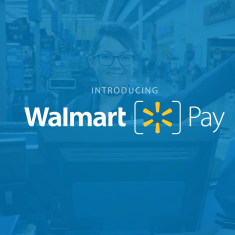Money20/20: Walmart Pay Lessons Learned—and the Road ahead
 With Walmart Pay showing strong growth since launching earlier this year, Walmart’s Daniel Eckert—one of the main architects of the service—provided some insights into the motivation behind creating Walmart Pay and what’s in store for the service. Speaking in a Tuesday afternoon session at Money20/20 in Las Vegas, Eckert characterized Walmart Pay as an effort to improve the checkout experience in particular.
With Walmart Pay showing strong growth since launching earlier this year, Walmart’s Daniel Eckert—one of the main architects of the service—provided some insights into the motivation behind creating Walmart Pay and what’s in store for the service. Speaking in a Tuesday afternoon session at Money20/20 in Las Vegas, Eckert characterized Walmart Pay as an effort to improve the checkout experience in particular.
“We looked at how we could remove seams from the checkout experience leveraging the broad digital assets we have and the supercomputer customers have in their pocket—the mobile phone,” said Eckert, who serves as senior vice president, services, Walmart U.S. “By doing that, we knew we could make checkout more convenient, faster, more secure and, I would even say, enjoyable.” Walmart Pay was designed largely to serve the segment Eckert called the “busy family”—those with four or more members for whom the value of saving time is nearly equal to that of saving money. “Removing hassles and simplifying life is a very important value to them, and time is viewed as a unit of currency,” he noted.
Three months into Walmart Pay’s national rollout, Eckert revealed some of the key trends and usage patterns the company has identified—some of which were quite surprising, he said. Prior to launch, the retail giant predicted that millennial males—especially those who are fathers with young families—would be the leading adopters of the service. However, although take-up has been strong among that demographic, the segments with the highest percentage of Walmart Pay users among Walmart customers have been gen X and baby boomer females, Eckert said. Meanwhile, middle to upper-middle class shoppers with above $50,000 in annual income have been the most common income segment to adopt Walmart Pay.
Looking ahead, Eckert said Walmart Pay will serve as a “foundational capability,” that will support additional services and use cases that will blend digital and physical shopping to improve the overall customer experience—whatever form those tools will take. “We anticipate we’ll be able to incorporate evolving mobile wallets and take-up of payment technology into the common experience of Walmart Pay,” he predicted. “We’re not sure where things are going to go as far as adoption curves, but we knew we’d better think for the future and design for the suture, because it’s really anybody’s guess.”
Related stories:











































